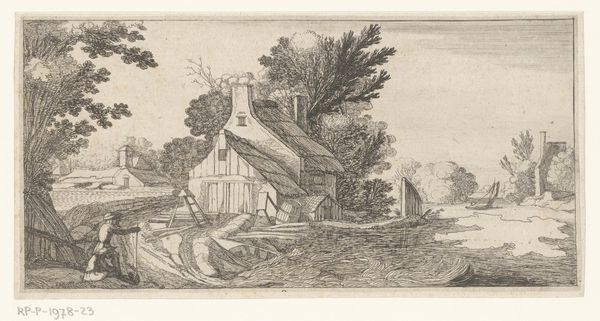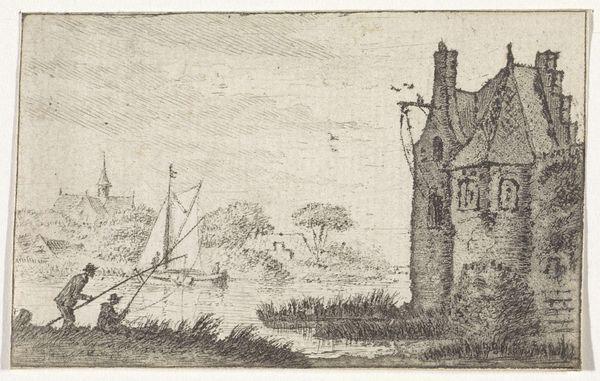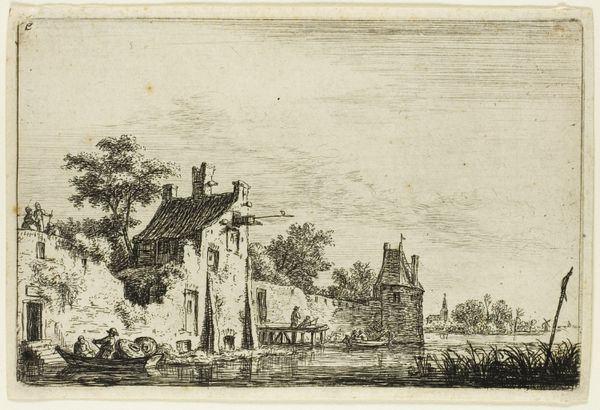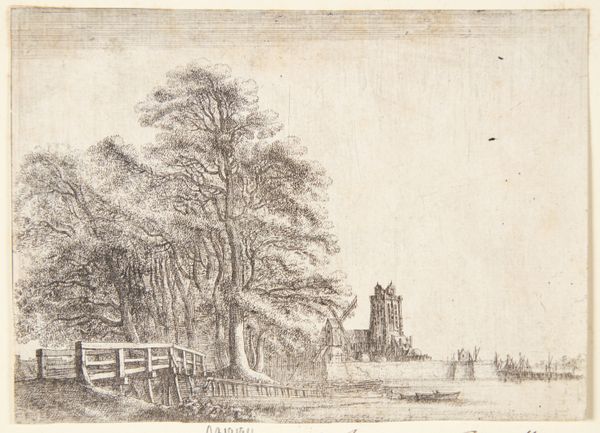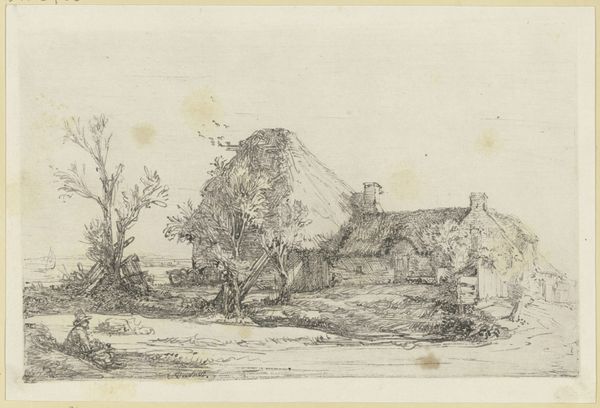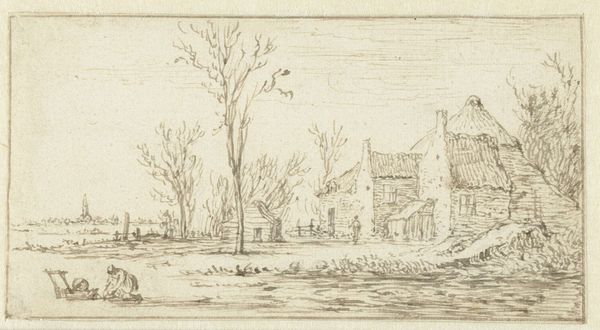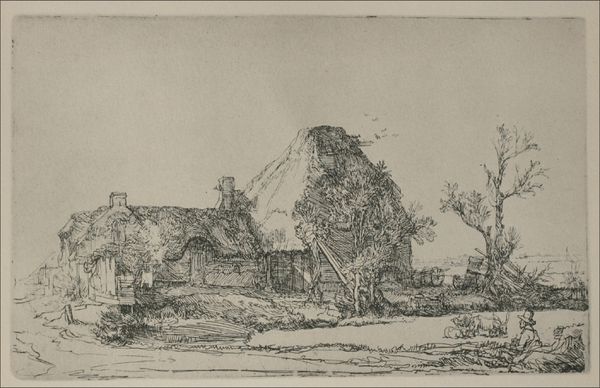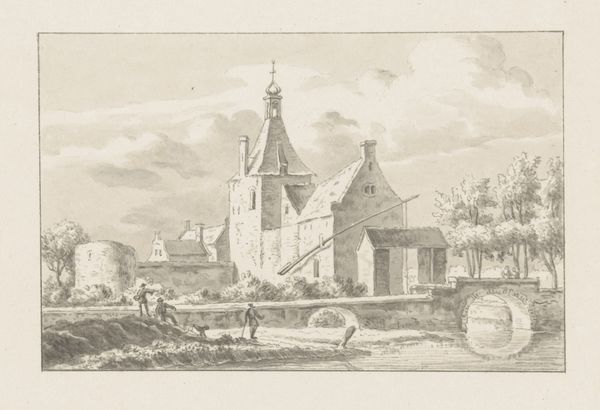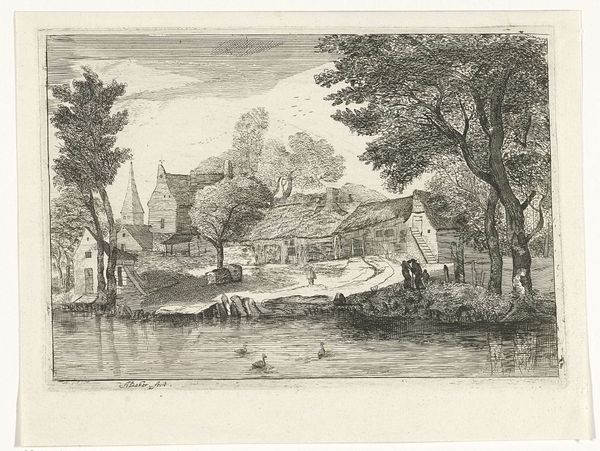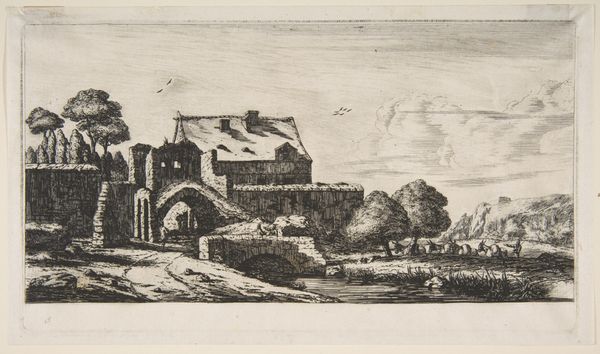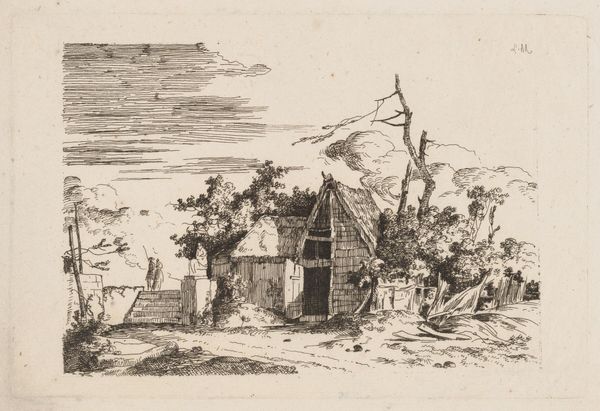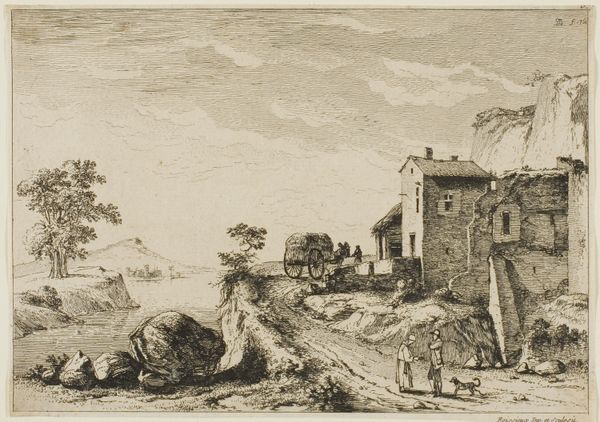
print, etching
dutch-golden-age
etching
landscape
Copyright: National Gallery of Art: CC0 1.0
Editor: Here we have "The Sentry Box on the Wall," an etching by Anthonie Waterloo. It has a sort of quiet, observational feel to it. What do you see in this piece, beyond just a literal depiction? Curator: The stillness you observe can also be interpreted as loaded. Waterloo, working in the Dutch Golden Age, presents what seems like a simple landscape, but landscapes were never just landscapes. Consider the political and economic context: the Dutch Republic was asserting its independence, expanding its trade routes, and consolidating power. What looks serene might be a carefully constructed image of Dutch control over its territory and waterways. What are your thoughts about its symbolism related to Dutch identity at that time? Editor: So, this isn't just about pretty scenery; it's about power? The sentry box becomes a symbol of control, maybe even surveillance? I didn't consider it that way at first. It gives a completely different layer to the work, almost a sense of underlying tension despite the calm appearance. Curator: Exactly! Think about the placement of the sentry box, slightly dilapidated yet still imposing. It speaks to a sustained effort to maintain dominance. And who is being watched? Is it an external threat or internal dissent? Or does this constant vigilance also shape a Dutch self-image and cultural understanding? Editor: That's a fascinating point about cultural understanding. The landscape then functions not just as a picture but also as a tool for shaping national identity, instilling values of order and security. Thanks for showing me that. I'm going to pay more attention to the political dimensions within landscape art from now on! Curator: My pleasure. Seeing art through multiple lenses - historical, political, social, and aesthetic - allows us a far richer appreciation for its layers of meaning.
Comments
No comments
Be the first to comment and join the conversation on the ultimate creative platform.
